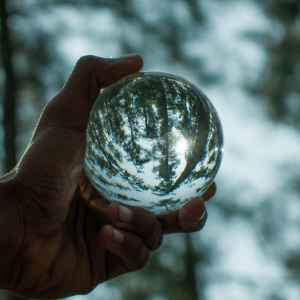
- This event has passed.

Buddhist Studies, Contemplative Arts & Disciplines (includes Nalanda, Maitri, Mudra), Online Program
Child of Illusion: Contemplative Art, Yogachara Mahayana Buddhism, and Liberation
February 17, 24 / March 2, 9, 16, 23, 30 / April 6
3:00 p.m. – 5:00 p.m. Eastern
Yogachara is the school of Buddhism that produces art and appreciates aesthetic consciousness. It includes archery, flower arrangement and similar approaches to the world of art. The Yogachara world of art is basically to pay respect or tribute to the existence of consciousness—which in turn, appreciates the spaciousness of shunyata…
Touch here, touch there, delight.
—Chögyam Trungpa Rinpoche, The Tea Cup and the Skull Cup
About the Course
This 8-week intensive course leads participants into deep engagement with contemplative arts and the view and meditation practices of the Yogachara school of Mahayana Buddhism—nd how together they can lead us into the liberation and freedom from fixed mind and open us to the vastness and vibrancy of the world around us.
The two ways of contemplative arts and the view of Yogachara come together at certain “pressure points.” One of these pressure points is the dualism/non-dualism that occurs in our experience and perception. A unique feature and skillful means of both the Yogachara and the contemplative arts is to use dualism—everyday experience—as a way to realize non-dualism, or free flowing liberation and openness. This course will focus, in various practical ways, on this experienced perception way of liberation and subtle aesthetic appreciation.
In particular the course will focus on enhancing what is sometimes called “post-meditation practice” as a vehicle for everyday liberation. Participants will learn how various contemplative art and Yogachara meditation practices can empower the phenomenal world to “wake you up.”
During this course, we will also contemplate Vasubandhu’s classic Buddhist treatise, Three Natures. Vasubandhu was a major figure in the development of the Yogachara View of Mahayana Buddhism. This is a classic root text of Buddhism, so it is not necessarily an “easy text,” however we will contemplate it within the context of Ben Conelly’s commentary on Vasubandhu’s ‘Three Natures,’ which is a helpful way to engage with and understand the text.
“If there is nothing to grasp, there is no grasping.”
—Vasubandhu’s Three Natures
We will also consider other texts, such as Traleg Kyabgon Rinpoche’s The Influence of Yogacara on Mahamudra, and Chögyam Trungpa Rinpoche’s The Tea Cup and the Skullcup.
Participants are encouraged to not feel intimidated by this text engagement, as we will be contemplating these texts together with the teacher and will work through them by gathering the collective wisdom of the group. The teacher will function as a discussion group leader, but along with everyone else in the group, will be exploring and unpacking these profound texts.
Along with the Yogachara view, participants will practice Yogachara meditations. In particular, contemplating the absolute and relative Lojong slogans: “Regard all dharmas as dreams,” and “In post meditation be a child of illusion.”
Further to this, there will be contemplative art perception practices during this course. These are “experiential practices” which will explore the idea of the perceiver and the perceived and the ordinary magic of the phenomenal world.
Another way you will engage with this course is through contemplative photography, so participants will need a digital camera (a smart phone camera is fine). There will be other perception based explorations that open the way of perception.
The course is structured in alternate two week segments. One week will focus on the contemplation of the texts, and the next week will focus on contemplative art practices.
What is Yogachara?
Yogachara is a traditional aspect of Buddhist teachings that is about the study of cognition, perception, and consciousness through engaging with meditative and contemplative practices—and this can include contemplative arts. Yogachara is also one of the two main schools or views of Mahayana Buddhism and it infuses the practice of Mahamudra.
Participants will:
- Engage with contemplative arts and the view and meditation practices of the Yogachara school of Mahayana Buddhism
- Work with various contemplative art and Yogachara meditation practices
- Study the following texts: Vasubandhu’s “Three Natures,” Traleg Kayabgon Rinpoche’s, The Influence of Yogacara on Mahmudra, and Chögyam Trungpa Rinpoche’s, The Tea Cup and the Skullcup
- Work with contemplating the absolute and relative Lojong slogans
- Engage with contemplative art perception practices during this course
- Explore contemplative art photography
- Hear talks and engage in groups discussions and explorations
This course is for you:
- If you have a sense of adventure! It can be an introduction to both the Buddhadharma and Contemplative Art practice
- If you are a seasoned dharma practitioner—deepen your understanding and engagement of the Mahayana and also have some fun with Dharma Art.
- If you are a contemplative artist—deepen your expressive practice as a liberation practice.
Please join this personal exploration of both the Yogachara view and the contemplative arts and how they contribute to personal transformation, liberation, and realization.
Prerequisites
Although this course is open to everyone, for both new and seasoned practitioners, it is a challenging deep dive into both Mahayana Buddhism and contemplative practice, so it is helpful if one already has an established meditation practice.
About the Teacher
John McQuade is a long time student of Sakyong Trungpa Rinpoche, Vajra Regent Osel Tendzin and Sakyong Mipham Rinpoche. He served on the Toronto Shambhala Center Council for twenty years including the Director twice. He is a Shambhala Training teacher and Maitri Five Wisdoms teacher. He founded Nalanda Miksang Contemplative Photography (www.miksang.org) and the Moon and Sun Contemplative Haiku group. He teaches the View and practice of the contemplative arts (www.dralaimage.com). He co-authored, with Miriam Hall, two books: Looking and Seeing and Heart of Photography. He holds a PhD in Phenomenology and teaches in academic institutions. He is married to Alice Yang and enjoys family life with their children Tara and Sean.
